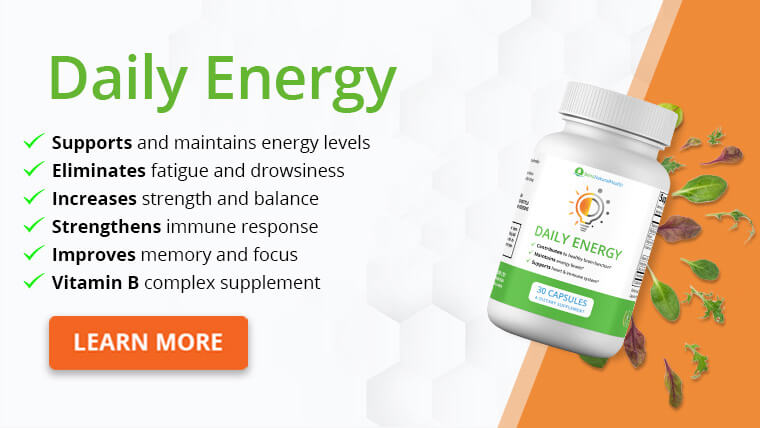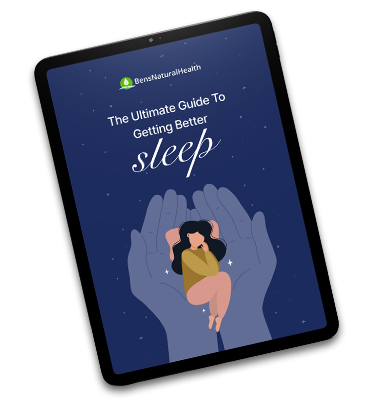- What is gabapentin?
- How does gabapentin work?
- What are the side effects of gabapentin?
- Foods to avoid when taking gabapentin
- What foods should you eat while taking gabapentin?
- Other things to avoid while taking gabapentin
- Should you take gabapentin with food?
- Best time to take gabapentin
- Are there any other safety concerns?
- Conclusion
- Source
Epilepsy, a type of seizure, is estimated to impact 5 million people worldwide each year.
Nerve pain, a separate health condition that can be associated with neuropathy, impacts around 10% of Americans.
Gabapentin is a medication that can be used to treat both seizures and nerve pain.
According to statistics, prescriptions for gabapentin are increasing, with nearly 50 million prescriptions written for gabapentin written in the United States alone in 2020.
That number was up from around 18.25 million prescriptions for gabapentin in 2004.
If you’re taking gabapentin for nerve pain or seizures, is there anything you should be doing in terms of your diet?
In this article, we’ll discuss some potential foods to eat and avoid while taking gabapentin, as well as other general information and safety precautions.
What is gabapentin?
Gabapentin is an anticonvulsant medication used to treat certain types of seizures as well as pain from neuropathy. Gabapentin is available as a generic medication and is also sold under the brand names Horizant®, Gralise®, and Neurontin®.
It was first discovered in 1970 and was approved by the United States Food and Drug Administration in 1993, with the less expensive generic version being available in the US since 2004.
Gabapentin comes in different forms, including capsules, tablets, extended-release (long-acting) tablets, and a liquid solution that is taken by mouth.
Gabapentin can be used in children as young as three years old, in which case the dose is calculated by the child’s weight.
For adults, dosages range from 300 milligrams (starting dose) daily to a maximum of 2,400-3600 milligrams per day, with the total dose divided among three equal doses.
Your healthcare provider will suggest a dosage based on your health conditions, how long you’ve been taking gabapentin, and how well you’re responding to the treatment.
Sign Up For Our Newsletter!
- Receive 10% off our best-selling supplements
- Get Your FREE Sleep Guide
- Be the first to hear about sales and promotions
- Stay up to date on our latest health news
How does gabapentin work?
Seizures are caused by sudden and abnormal changes in the electrical activity in your brain. Seizures can cause involuntary jerking of your legs and arms, loss of consciousness, breathing problems, and loss of bladder and bowel control, among other symptoms.
Gabapentin helps reduce seizures by stopping abnormal electrical activity in your brain, which causes seizures.
However, gabapentin isn’t suitable for treating all types of seizures, so an accurate diagnosis from a neurologist is important to be sure your treatment is right for your type of seizure.
For treating nerve pain, gabapentin is thought to stop pain signals from traveling from nerves to your brain via your spinal cord.
Nerve pain is usually a result of an injury or problem with your central nervous system, which consists of your brain and spinal cord.
Other types of nerve pain that gabapentin might help include:
- Pain from fibromyalgia (a chronic condition causing body pain/tenderness as well as sleep problems and fatigue)
- Pain from neuropathy (including diabetic neuropathy)
- Postherpetic neuralgia (pain after a shingles infection)
In addition to blocking pain signals, gabapentin appears to have an anti-inflammatory effect (in some instances, according to test tube and animal studies), which is another way it can help reduce pain.

What are the side effects of gabapentin?
Some of the more common side effects of gabapentin can include:
- Feeling tired (fatigue)
- Dizziness
- Headache
- Nausea and vomiting
- Fever
- Difficulty speaking
- Recurring infections
- Memory loss
- Weight gain
- Movement problems, including issues with coordination, being unsteady, having tremors, and jerky movements
- Eye problems, including unusual eye movements and experiencing double vision
Foods to avoid when taking gabapentin
There are no specific foods to avoid while taking gabapentin in terms of drug/food interactions. However, if you’re taking gabapentin for seizures or nerve pain, a general, anti-inflammatory diet is recommended to support nerve and overall health.
Some things to potentially avoid while taking gabapentin (due to their possible detrimental effects on overall health, including nerve health) include:
Added sugars
A diet high in added sugar can contribute to high blood sugar levels, including prediabetes and type 2 diabetes.
Diabetic neuropathy occurs when nerves are damaged from persistent high blood sugar, which is worsened if blood sugar levels aren’t brought down.
Today’s typical Western diet is high in added sugars, largely due to the sugars added to processed foods and sugar-sweetened beverages.
Some of the more obvious sources of added sugars can include foods like:
- Candy
- Cakes
- Cookies
- Pies and cobblers
- Sweet rolls, pastries, and doughnuts
- Dairy desserts, such as ice cream and yogurt
However, sugar is also added to foods that might otherwise seem healthy or like they wouldn’t be a source of added sugar, such as:
- Bread
- Soups
- Condiments and salad dressings
- Cereal
- Nutrition bars & shakes
- Dried fruit (many types of dried fruit have sugar added in addition to the natural sugar in the fruit)
When it comes to sugar-sweetened drinks, there are many sources other than soda. Watch out for added sugar in drinks like:
- Fruit-flavored drinks
- Flavored teas
- Flavored milk
- Energy drinks
- Flavored coffee (lattes, etc.)
- Some types of prepared fruit smoothies
- Flavored kefir (yogurt drink)
Refined grains
Like added sugar, refined grains can contribute to high blood sugar levels if you have diabetes.
Since gabapentin can be used to treat diabetic nerve pain, you should limit or avoid refined grains to help support healthy blood sugar levels.
Refined grains are those that don’t include the whole grain and typically include the ingredient “enriched flour.”
Refined grains are lower in fiber, protein, and nutrients compared to whole grains, which are more beneficial for blood sugar and overall health.
Some of the more common sources of refined grains to avoid are:
- White bread, bagels, tortillas, etc.
- Baked goods containing refined grains (all-purpose flour)
- White rice
- Corn grits
Saturated fat
Saturated fats are primarily found in animal products, as well as some plant sources such as coconut oil and palm kernel oil.
Some studies associate saturated fat intake with the progression of neuropathy. However, some healthcare providers recommend a high-fat ketogenic diet to treat certain types of seizures, which tend to be high in saturated fat.
If your healthcare provider isn’t recommending a ketogenic diet, you may want to limit saturated fat to fewer than 10% of your total calories, which is the current recommendation per the United States Dietary Guidelines.
This would equate to less than 22 grams of saturated fat per day for a 2,000-calorie diet.
Some foods with saturated fat to limit and potentially avoid on gabapentin include:
- beef (primarily non-lean cuts with marbled fat or ground beef with 20% fat)
- processed meats like sausage, hot dogs, and salami
- lamb
- non-lean cuts of pork
- poultry with the skin on
- lard and cream
- butter
- cheese
- ice cream
- coconut (including coconut oil)
- palm oil and palm kernel oil
- some baked and fried foods
What foods should you eat while taking gabapentin?
Unsaturated fats
Studies show that unsaturated fatty acids can help reverse the progression of neuropathy. Unsaturated fats are a healthy alternative to saturated fat, which we just covered in the previous section.
Unsaturated fats are found in plant-based foods such as nuts, seeds, avocados, and vegetable oils. They’re also found in fatty fish like salmon, mackerel, and sardines, which are especially high in omega-3 fatty acids.
According to animal studies, omega-3 supplementation accelerated nerve regeneration and reduced symptoms of nerve pain in mice.
Some of the best sources of omega-3 unsaturated fats include:
- Mackerel
- Salmon
- Fish oil (including cod liver oil)
- Algae oil
- Chia seeds
- Walnuts
- Oysters
- Flaxseeds and flaxseed oil
Folic acid (vitamin B9)
Though the evidence isn’t strong enough to make a definitive recommendation regarding folic acid supplementation, there is some evidence that anticonvulsants might deplete levels of folic acid while increasing homocysteine levels.
Folic acid is especially important in pregnant women because it helps reduce certain birth defects, and homocysteine is an amino acid associated with the development of seizures.
You should speak with your healthcare provider about whether you need to supplement folic acid while on gabapentin.
You can get folic acid naturally in your diet from sources like:
- Dark green leafy vegetables such as turnip greens, spinach, romaine lettuce, asparagus, Brussels sprouts, and broccoli
- Beans
- Peanuts
- Sunflower seeds
- Fresh fruits and fruit juices
- Whole grains
- Liver
- Seafood
- Eggs
- Fortified foods and supplements
Vitamin B12
Some studies show an association between anticonvulsant use and vitamin B12 deficiency, which causes symptoms like:
- fatigue/lethargy
- breathlessness
- feeling faint
- headaches
- pale skin
- abnormal heartbeats (palpitations)
- loss of appetite and weight loss
To help prevent vitamin B12 deficiency and anemia, you can get vitamin B12 from foods such as:
- meat
- fish
- milk
- cheese
- eggs
- some fortified (nutrients added) cereals

Other things to avoid while taking gabapentin
Alcohol
Alcohol can worsen side effects like sleepiness and dizziness, but it doesn’t interact with gabapentin in a dangerous way.
The bottom line is that you shouldn’t abuse alcohol while taking gabapentin, and if you do choose to drink alcohol, it should be in moderation to minimize adverse side effects.
Certain medications
Some medications might interact with gabapentin. You should consult with your healthcare provider or pharmacist for personalized and accurate recommendations in terms of over-the-counter and prescription drugs to avoid while taking gabapentin.
Should you take gabapentin with food?
You can take gabapentin with or without food. If you experience nausea while taking gabapentin, taking it with food or milk can help minimize those side effects.
Gabapentin capsules can be opened and mixed with juice for young patients or those with difficulty swallowing pills.
Best time to take gabapentin
Gabapentin should be taken at the same time each day and is usually taken three times a day. There is no best time to take it, but consistency is the most important factor!
A typical dosage schedule is once in the morning, once in the afternoon, and once in the evening.
Are there any other safety concerns?
- If you develop any signs of an allergic reaction to gabapentin, you should notify your healthcare provider immediately. Some signs of a drug allergy include skin rash, itching, trouble breathing, and swelling of your face, hands, or mouth.
- Be careful when driving or operating heavy machinery while you’re taking gabapentin. If you become dizzy or lose consciousness while doing so, you could endanger the health and safety of yourself and others around you.
Conclusion
Gabapentin is an anticonvulsant medication used to treat nerve pain and certain types of seizures.
There are no known dietary interactions with gabapentin, which means that there aren’t any specific foods that you should absolutely avoid.
In order to support brain and nerve health, a general healthy diet such as an anti-inflammatory Mediterranean diet is ideal while taking gabapentin.
These types of diets are rich in plant-based foods such as unsaturated fats, whole grains, nuts and seeds while limiting refined sugar, refined grains, and high intakes of saturated fat.
You should avoid drinking alcohol in heavy amounts while taking gabapentin. You should also avoid any prescription or over-the-counter medications that your healthcare provider or pharmacist advises against, which might interact with gabapentin.
Explore More








